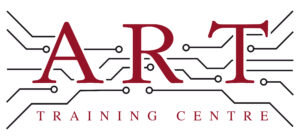Definition
Conformal Coating Application is the process of applying a protective layer to electronic components, particularly printed circuit boards (PCBs). This layer, typically made from polymer materials, conforms to the contours of the surfaces it covers, providing insulation and protection against moisture, dust, and chemicals. It is a critical component in electronics manufacturing that enhances the reliability and longevity of electronic devices.
How It’s Used in the Industry
In electronics assembly, the Conformal Coating Application process begins with thorough cleaning of the PCB to remove contaminants. Next, the coating material is applied using methods such as spraying, dipping, or brushing. After application, the coating is cured, either through heat or UV light, to ensure proper adhesion and performance. This process is vital for protecting components during soldering and rework, as it helps prevent damage from soldering heat and environmental factors. Understanding this process is essential for both technicians in training and experienced professionals, as it directly impacts the quality and reliability of the final product.
History & Origins
Conformal Coating Application became common in the electronics manufacturing industry during the 1960s, particularly with the rise of military and aerospace applications that required enhanced durability. Early adoption was driven by the need to protect sensitive electronic components from harsh environments. Over time, the development of standards such as IPC-610 and IPC-620 helped establish best practices for coating materials and application methods, ensuring consistent quality and performance across the industry. Advances in technology have further refined these processes, making conformal coatings essential for modern electronics.
Variations
There are several types of Conformal Coating Application, including acrylic, silicone, polyurethane, and epoxy coatings. Each type has distinct properties, such as flexibility, chemical resistance, and thermal stability, making them suitable for different applications. For example, acrylic coatings are often easier to apply and remove, while epoxy coatings provide superior protection in harsh environments. Understanding these variations helps technicians choose the appropriate coating for specific needs, ensuring optimal performance and reliability of electronic devices.
Modern Applications
Today, Conformal Coating Application plays a crucial role in the production of both surface mount and through-hole assemblies. It is essential for ensuring that electronic devices meet quality and reliability standards, especially in industries like automotive, aerospace, and consumer electronics. Compliance with IPC standards is vital, as it guarantees that coatings are applied correctly and effectively. Additionally, as technology advances, the use of conformal coatings continues to evolve, incorporating new materials and application techniques to enhance device performance.
Practical Tips & Training
When working with Conformal Coating Application, it is important to follow safety guidelines, such as using personal protective equipment (PPE) and ensuring proper ventilation. Inspecting the coating for uniformity and coverage is crucial for optimal performance. Useful tools include spray guns, dipping tanks, and curing equipment. Structured training and certification in electronics are beneficial for technicians, as they provide essential knowledge and skills to apply coatings effectively and understand their importance in enhancing device reliability.


